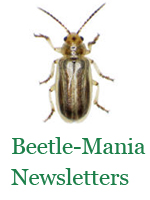Vogtia malloi Pastrana
[Lepidoptera: Pyralidae]
Biology
The life cycle is completed in 39 days. Female moths can lay 200-300 eggs usually on the upper portions of the plant. Larvae hatch on the foliage and later borer into the hollow stems. Mature larvae are about 20 mm long and seal themselves in a chamber in the stem to pupate. Larvae chew nearly through the stem before they pupate leaving only a thin tissue for the adult moth to escape from. Pupation takes about 10 days at 23EC.
History
This borer was released in five states and has become widely distributed.
Status
The alligatorweed stem borer is widely distributed but seems to have the most impact in the northern ranges of alligatorweed.
Management
The adult moths are strong fliers and distribute themselves well. When plants are attacked in conjunction with alligatorweed flea beetle the damage seems to be greater than from either species alone.
Weeds Affected
The larvae only feed on alligatorweed.
Literature
Coulson, J.R. 1977. Biological Control of Alligatorweed, 1959-1972. A review and evaluation. Technical Bulletin, United States Department of Agriculture 1547, 98 pp.
Grodowitz, M. J., W. A. Johnson, T. D. Center, G. Buckingham, and A. F. Cofrancesco, Jr. 1989. The use of biocontrol technology for the management of introduced aquatic plants: A short course. U. S. Army Corps of Engineers, Jacksonville District. Slide set and manual. 117 pp.
Links

